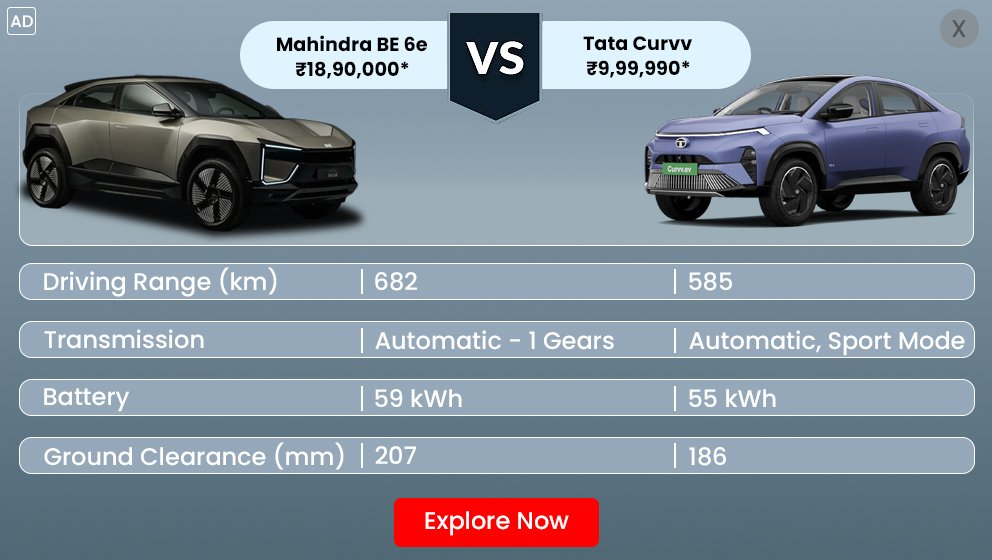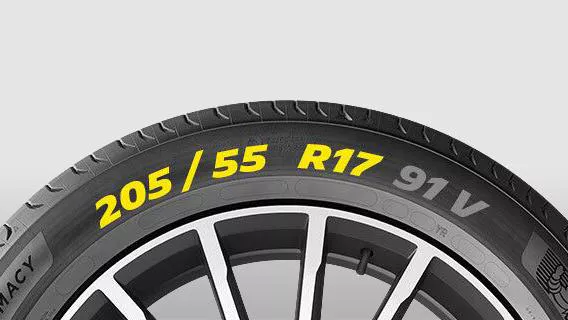Have you ever noticed inscriptions like 195/65 R15 91H on a tyre? They are not random marks. They carry critical details about the size of the tyre, the load capacity, the speed rating, and all that.
For any new tyre purchase, whether for car tyres or bike tyres, learning about these markings will assist you in making the appropriate choice for Indian roads.
Why Are These Markings Important on Tyres?
Tyre markings help you with:
- Choosing a correct tyre size
- Improving fuel efficiency and riding comfort
- Ensuring safety while using tyres deemed appropriate for your vehicle
- Getting just the right replacement tyre
It is a wise move to identify these markings while driving in town or on a highway, and for every type of car tyre and bike tyre.
What Do Tyre Markings Represent?
Let’s examine a typical marking you’d find on Indian car tyres:
195/65 R15 91H
|
Part |
Meaning |
|
195 |
Tyre width in millimetres |
|
65 |
Aspect ratio (sidewall height is 65% of width) |
|
R |
Radial construction |
|
15 |
Rim diameter in inches |
|
91 |
Load index (weight capacity) |
|
H |
Speed rating (top speed limit) |
Also Read: Types of Headlights in Car: Everything You Need to Know
Example for Bike Tyres:
100/90-17 55P
|
Part |
Meaning |
|
100 |
Tyre width in mm |
|
90 |
Aspect ratio |
|
17 |
Rim diameter in inches |
|
55 |
Load index |
|
P |
Speed rating |
These labels are typically marked on bike tyres available in India from brands such as Hero, TVS, Bajaj, and Honda.
Other Labels Printed on Tyres
Load Index
Specifies how much load the tyre will carry.
- 91 = 615 kg (on car tyres)
- 55 = 218 kg (on bike tyres)
Speed Rating
States the maximum speed at which the tyre can function.
- T = 190 km/h
- H = 210 km/h
- V = 240 km/h
- P = 150 km/h (usually found on bike tyres)
DOT Code
Shows the manufacturing date of the tyre.
Example: 0723 stands for sometime during the 7th week of 2023.
TWI (Tread Wear Indicator)
A bump or a line inside the groove of tread.
Time to replace the tyre if they have worn down to this level.
ISI Mark
Exhibited on tyres sold in India, asserting that they comply with Indian safety standards.
Types of Tyre Construction
|
Type |
Description |
|
Radial (R) |
Most common in India, used for car tyres and bike tyres |
|
Bias-ply |
Older formats, used for heavy-duty vehicles |
How to Choose Tyres in India
For Car Tyres:
- Always keep the size suggested by the car manufacturer
- Tubeless car tyres are preferable for longer durability
- Choose the appropriate tread pattern according to your city, highway, or off-road driving
For Bike Tyres:
- Keep the existing size for safety reasons
- Use bike tyres from reputable brands such as MRF, CEAT, Apollo, and TVS
- Choose based on your usage: daily commute or long-distance travelling
Comparison Table: Car Tyres Vs Bike Tyres
|
Feature |
Car Tyres |
Bike Tyres |
|
Example |
195/65 R15 91H |
100/90-17 55P |
|
Width Range |
155 mm – 235 mm |
80 mm – 140 mm |
|
Rim Diameter |
13" to 18" |
17" to 19" |
|
Speed Ratings |
T, H, V |
P, Q, R |
|
Popular Brands |
MRF, Apollo, Bridgestone |
TVS Tyres, CEAT, Michelin |
Helpful Tips for Indian Users
- Change the car tyres every 40,000–50,000 km or after 5 years
- Change bike tyres every 20,000–30,000 km or once the tread has worn out
- Regularly check tyre pressures
- Always buy tyres from authorised dealers
- Avoid tyres older than 2 years from the manufacturing date
Conclusion
Reading tyre markings keeps you informed as you purchase new car tyres or bike tyres. The letters and numbers reveal all—from size to safety rating. It is particularly relevant in India, where conditions range from city roads to highways and country roads.
Take the time to study the markings on your next tyre replacement. It may enhance the performance, safety, and life of your vehicle.
Also Read: RC Tax Mode: Simple Guide for Indian Car Owners
Follow Autonexa Whatsapp Channel to stay updated with the latest happenings in the automobile industry.







_1765357579.webp)
_1765357577.webp)

_1765348383.webp)